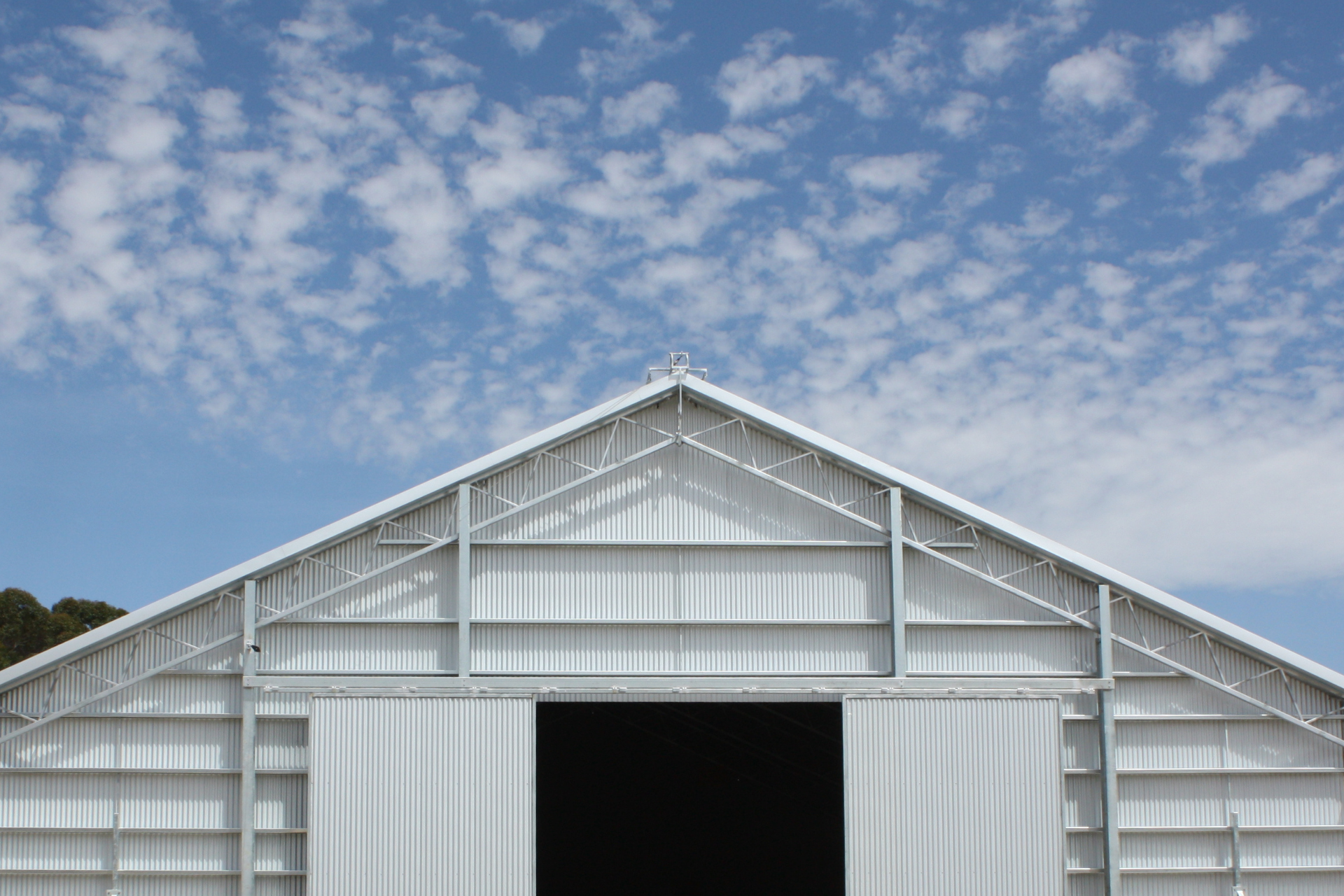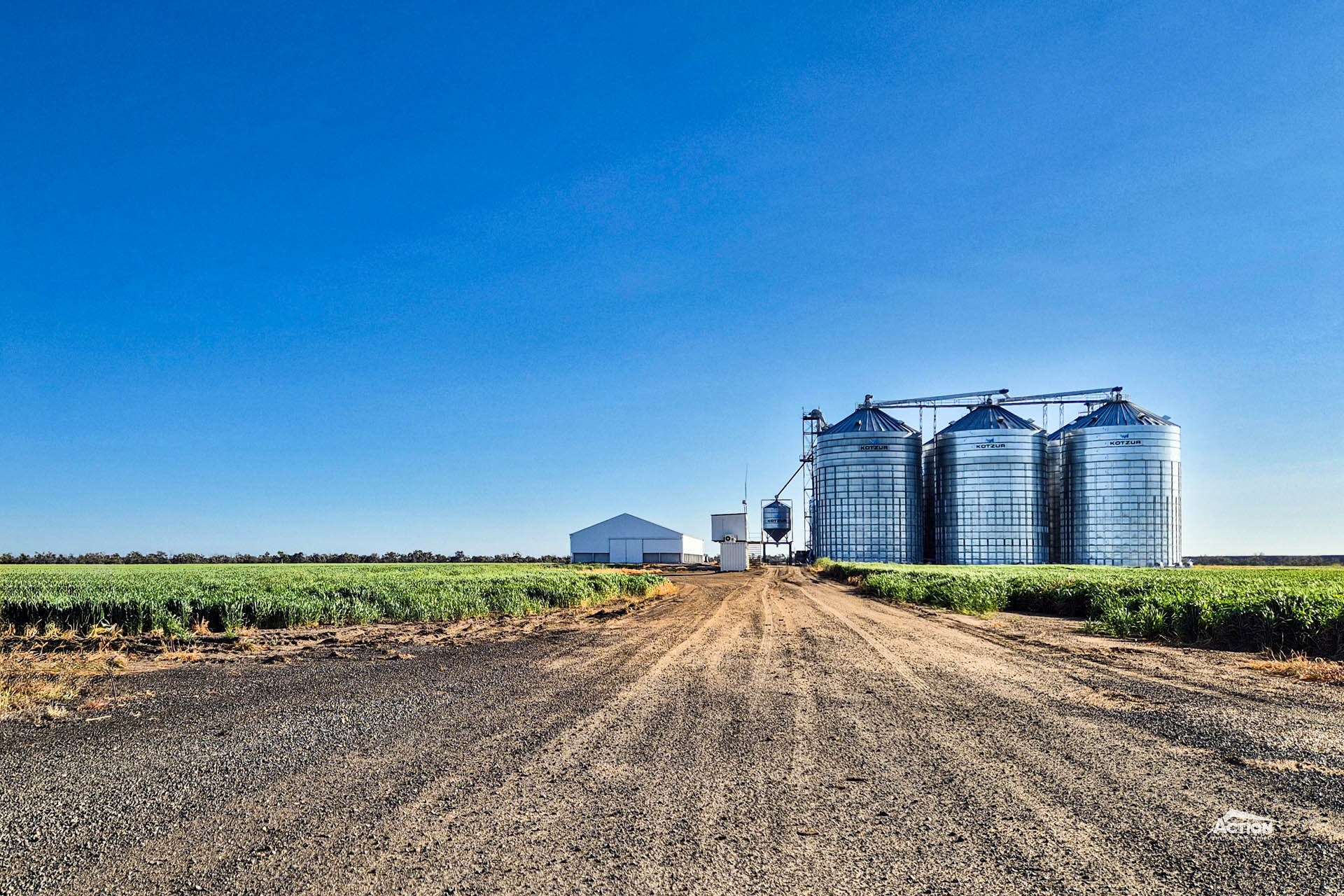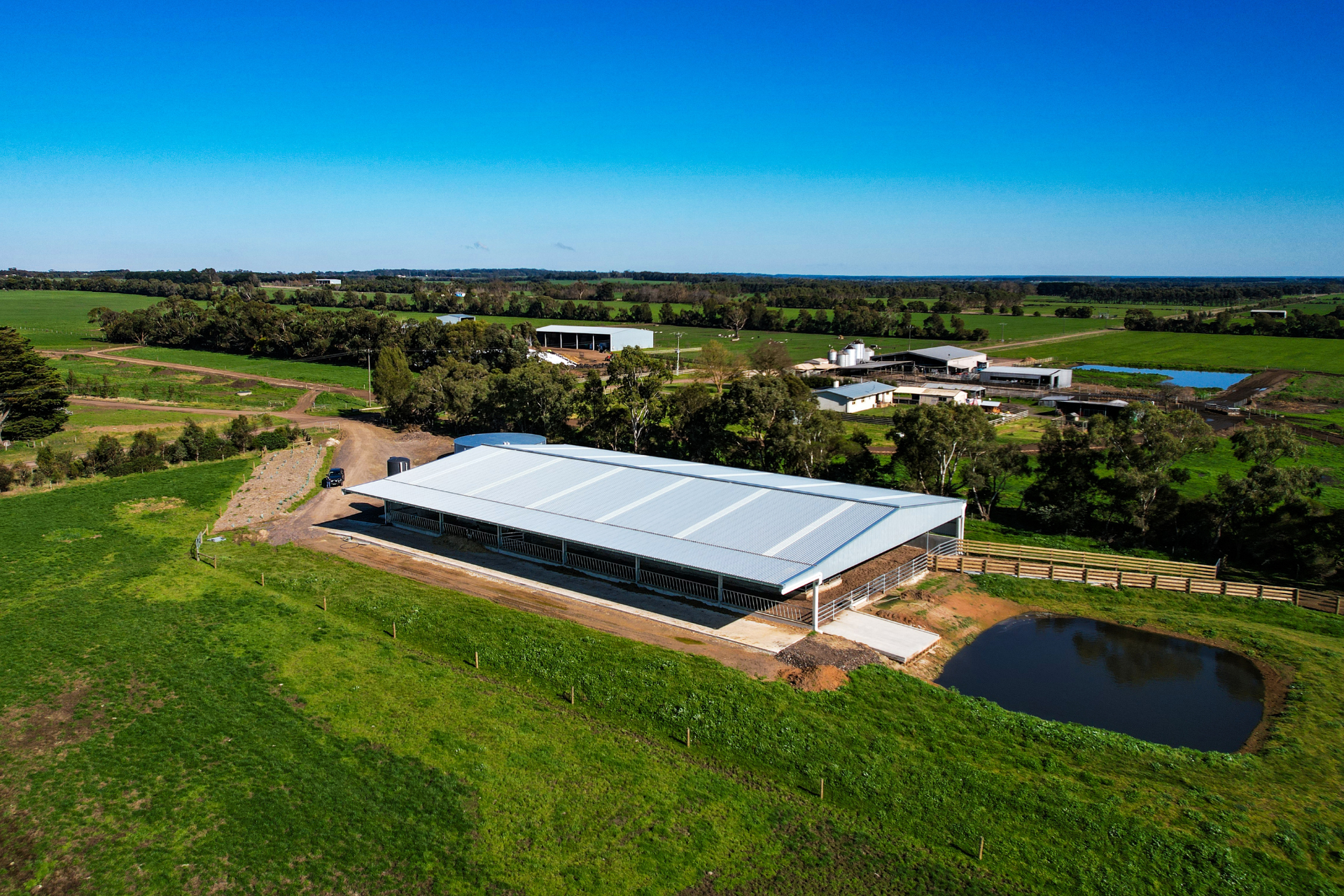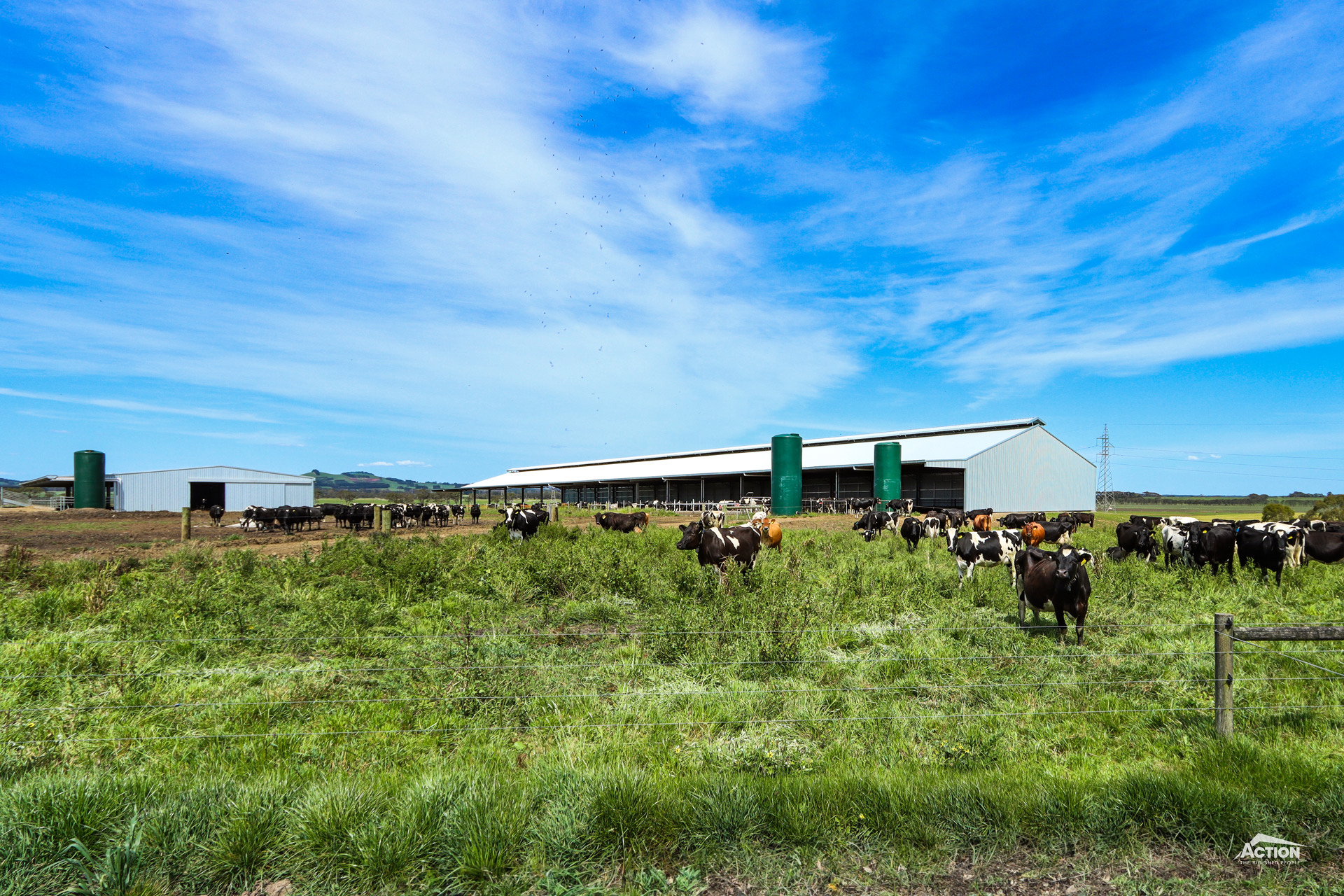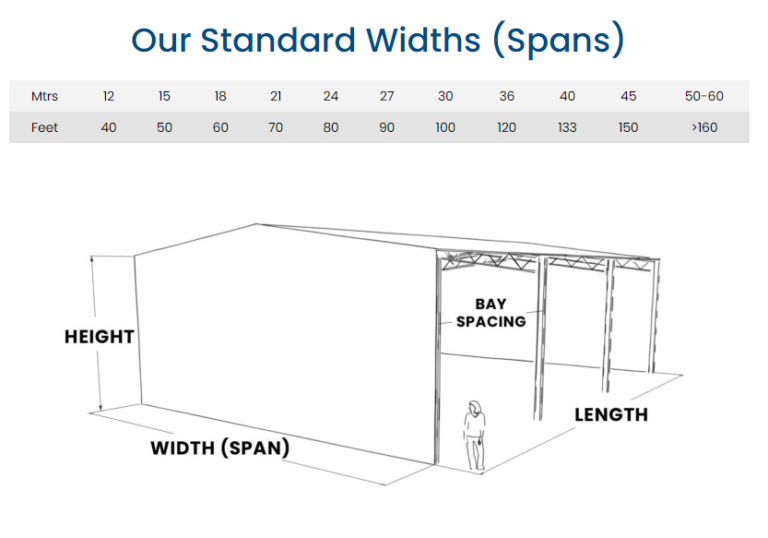There are so many advantages of having on-farm grain storage sheds.
For example, sheds are safe and cost-effective for bulk grain storage. Grain sheds also provide excellent weather protection and aeration. And a grain shed is a versatile investment.
To capitalise on these advantages, your grain shed needs to be well designed. The ideal grain shed design facilitates best-practice grain storage and is tailored to suit your storage requirements.
Creating a custom grain shed design helps you get the most out of your investment. It makes sure your on-farm grain storage shed works for you.
Most importantly, taking the time to perfect your grain shed design now, will keep your grain in the best possible condition in the long run. The goal is to have your grain come out of the shed in the same condition as it went in. A custom grain shed design can help achieve this.
If you have reached this point and are asking; “How do I create a custom grain shed design?”
Or “where do I start? What do I need to know?”
Then, read on! We have created the ultimate guide to grain shed design.
How To Create A Custom Grain Shed Design
In this guide we are going to discuss the key details and design components that need to be considered when creating a custom grain shed design.
These include shed size, configuration, wall types, wall height, access options, ventilation and roof pitch.
However, the first step is to get a good understanding of your grain storage requirements.
Understanding Your Grain Storage Requirements
Your grain storage requirements will influence what grain shed design will work best for you. These could include the amount of grain you are storing, the type of grain you are storing and how long you intend to store the grain for.
To understand your grain storage requirements, here are some questions to ask:
- Are you working to a budget?
- Do you need to accommodate truck access and tipping?
- Does your grain need to be segregated?
- How much grain do you need to store?
- Is the type of grain you are storing suited to shed storage?
- What are your future grain storage plans? How long are you planning to store the grain?
- Where will the shed be located? Will the shed site dictate the design?
- Will you be using your shed in the off-season for machinery or hay storage?
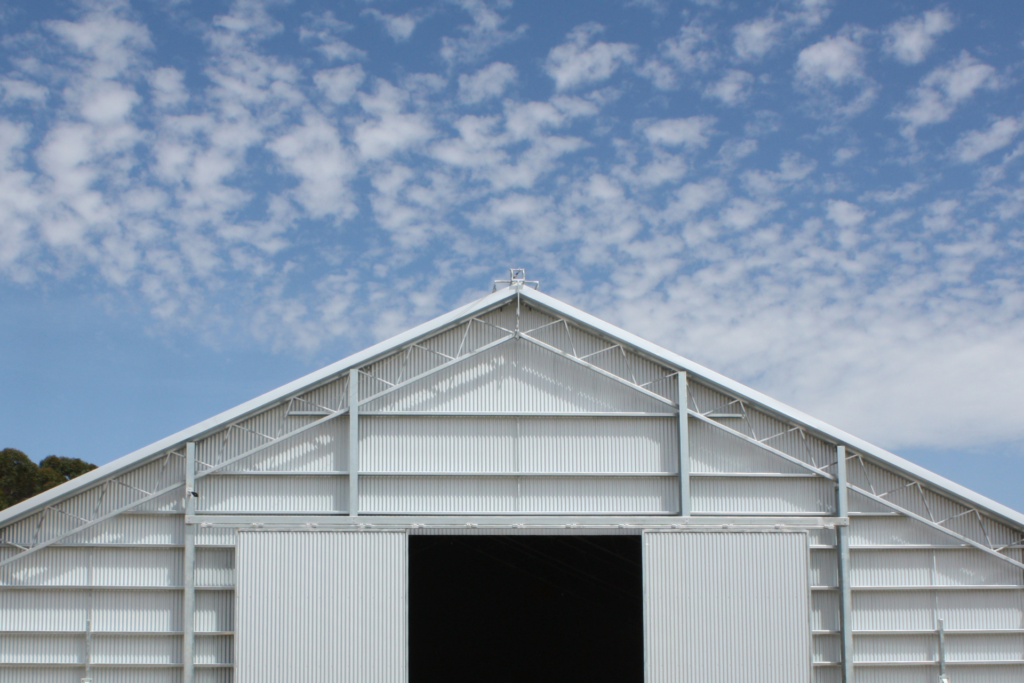
Once you have reviewed your grain storage requirements you will have a clear picture of what you hope to achieve with your shed. So, let’s look at the different ways you can customise your grain shed.
9 Ways To Customise Your Grain Shed Design
1. Size
Like any shed project, size is one of the most important details of a grain shed.
The amount of grain that you need to store determines the best size for your shed. But that’s not all.
The type of grain you are storing also needs to be considered. This is because different grains have different physical properties. For example, the bulk density of barley is 600-650 kg/m3, while the bulk density of faba beans is 750-800 kg/m3.
Use the grain storage calculator below to learn about the different bulk densities and the storage capacity of your shed.
Put in your shed size and grain type in the left side fields and the storage volume and total tonnage will be displayed on the right.

This calculator can be a useful tool to give you an idea of how much grain your shed will be able to store. However, we recommend discussing your capacity requirements with our building consultants first. We can then work with you to find the most cost-effective shed design to suit.
2. Configuration
3. Roof Pitch
4. Wall Type
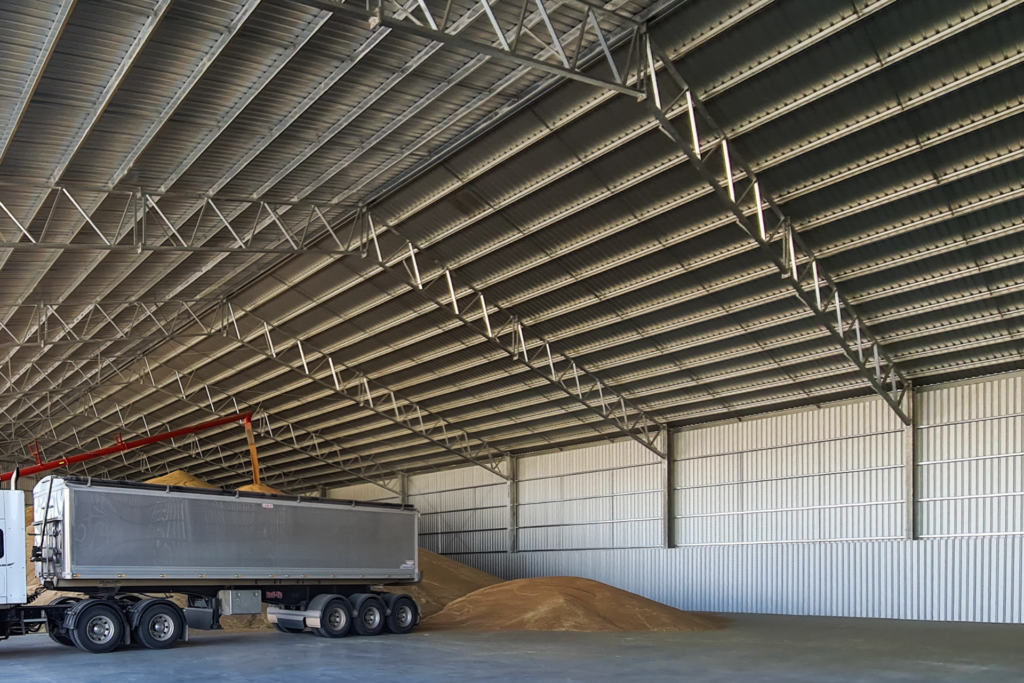
Retrofitting self-supporting concrete walls to an existing hay or machinery shed can be a cost-effective way for you to gain more grain storage capacity.
Action Steel Click to Tweet
Now, let’s discuss wall height.
5. Wall Height
6. Access
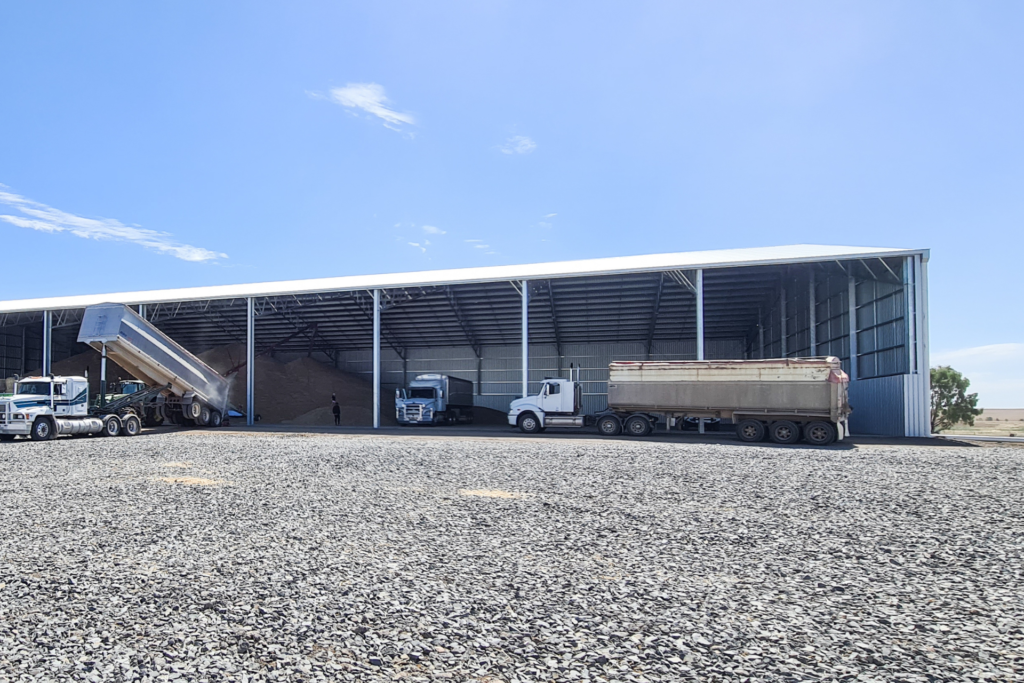
For fully-enclosed grain sheds, sliding doors are usually installed on the gable ends for quick and easy access. Overhead loading systems are another option.
Extra wide bay spacings such as 8.5 metres or 9 metres are an access option for open-front sheds. These provide more room for machinery and trucks when loading and unloading the shed, making these tasks quicker, easier and less stressful!
7. Ventilation
8. Segregation
9. Concrete Slabs
So, that’s the nine ways to customise your grain shed design!
What else do you need to know? Check out the resources below from our Learning Hub to help kick-start your project planning.

